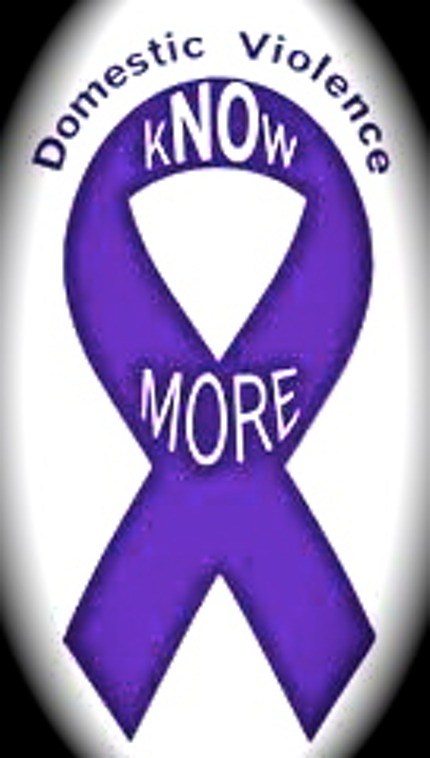
What is domestic violence?
Domestic violence -- also called intimate partner abuse, intimate partner violence, and domestic abuse -- takes many forms. Maltreatment that takes place in the context of any romantic relationship is abuse as described by the above specific terms. It therefore affects men, women, or teen girls and boys, whether in a heterosexual or homosexual relationship. Intimate partner violence may consist of one or more forms, including emotional, psychological, physical, sexual, or economic abuse and is defined as one person in an intimate relationship using any means to control the other. Types of domestic abuse include physical, verbal (also called emotional, mental, or psychological abuse), sexual, economic/financial, and spiritual abuse. Stalking and cyber-stalking are also forms of intimate partner abuse.
Physical violence includes assault of any kind, ranging from pinching or pushing to choking, shooting, stabbing, and murder. Verbal, emotional, mental, or psychological abuse is described as using words to criticize, demean, or otherwise decrease the confidence of the victim. Sexual abuse refers to any behavior that uses sex to control or demean the victim, like intimidating the victim into engaging in unsafe sex or sexual practices in which he or she does not want to participate. Economic or financial abuse is described as limiting the victim's financial freedom or security. Spiritual abusers either force the victim to participate in the batterer's religious practices instead of their own or to raise mutual children in a religion that the victim is not in favor of. Stalking refers to repeatedly harassing and threatening behavior, including showing up at the victim's home or workplace, placing harassing phone calls, voicemail, email or postal mail messages or objects, or vandalizing the victim's property. It is usually committed by perpetrators of other forms of domestic violence.
Domestic violence is a major public-health problem in that it affects millions of people and often results in physical and emotional injuries and even deaths. Media reporting of celebrities like Rihanna's domestic abuse victimization demonstrates that even the most accomplished individual can fall victim to this problem. The statistics about those who are affected by intimate partner violence are staggering; domestic abuse affects 3%-5% of current adult relationships in the United States, including more than 2 million women. Despite the myth that violence against men does not occur, 800,000 men are victims of intimate partner abuse. Nearly one-third of women can expect to be the victim of intimate partner violence sometime in their lifetime. About 25% of gay, lesbian, bisexual, and transgender (GLBT) individuals are victims of intimate partner abuse, just as often as are heterosexual women. As of 2000, about 8 million incidents of domestic violence occurred in one year in the United States, and 20.2% of women visiting family practice clinics have been found to be experiencing intimate partner violence. About 1,300 deaths were attributed to domestic abuse as of 2003.
Teen intimate partner abuse takes place at an alarming rate. Facts about domestic violence in this group include that as many as 12% of youth in grades 7 through 12 have been victims of physical dating violence, and 20% of youth have suffered from psychological dating violence. This abuse puts victims in danger of practicing risky sexual behavior, unhealthy eating, drug use, suicidal behaviors, as well as physical injury and death. These victims are also more likely to become sufferers of intimate partner violence as adults.
GLBT people often face unique challenges when trying to cope with domestic-abuse victimization. The assumption by family, friends, coworkers, and professionals that abuse is mutual in homosexual couples or is an expected part of what is perceived as a dysfunctional relationship since it is not heterosexual, poses major obstacles to battered GLBT individuals in getting help. Other barriers for GLBT battered men and women include the fear of losing their jobs, home, and/or custody of their children should their sexual orientation become known in the context of getting help for intimate partner abuse. That GLBT individuals do not receive the legal and financial protections their heterosexual counterparts do can inhibit their ability to support themselves and live independently after leaving the abuser. Discrimination against GLBT people and other minorities is also a deterrent to receiving care. Another formidable obstacle includes a lack of knowing other admitted GLBT victims of domestic violence, as well as the smallness of the community, which can make it difficult for battered men and women in the GLBT community to live anonymously from their abuser in the same town.
There tends to be a cycle of behavior, known as the cycle of violence, in abusive adult relationships. That cycle includes the tension-building, explosive, and tranquility/honeymoon stages. The tension-building stage is described as the phase of the abusive relationship in which the abuser tends to engage in lower-level abuse, like pushing, insulting, and escalating demands for control. Simultaneously, the victim of abuse tends to try to appease the abuser in an effort to avoid worsening of the abuse. Acts of abuse escalate to a severe level during the explosive stage of intimate partner violence, manifesting as the most overt and serious acts of abuse and control, like slapping, punching, rape, or inhibiting the movements of the victim. The tranquility or honeymoon stage of the cycle of domestic violence tends to immediately follow the overt acts of aggression of the explosive stage and is usually characterized by the abuser seeming to be quite remorseful and apologetic for the abuse, making promises that it will never happen again and showering the victim with affection.


